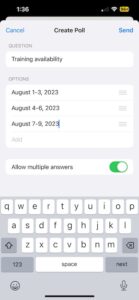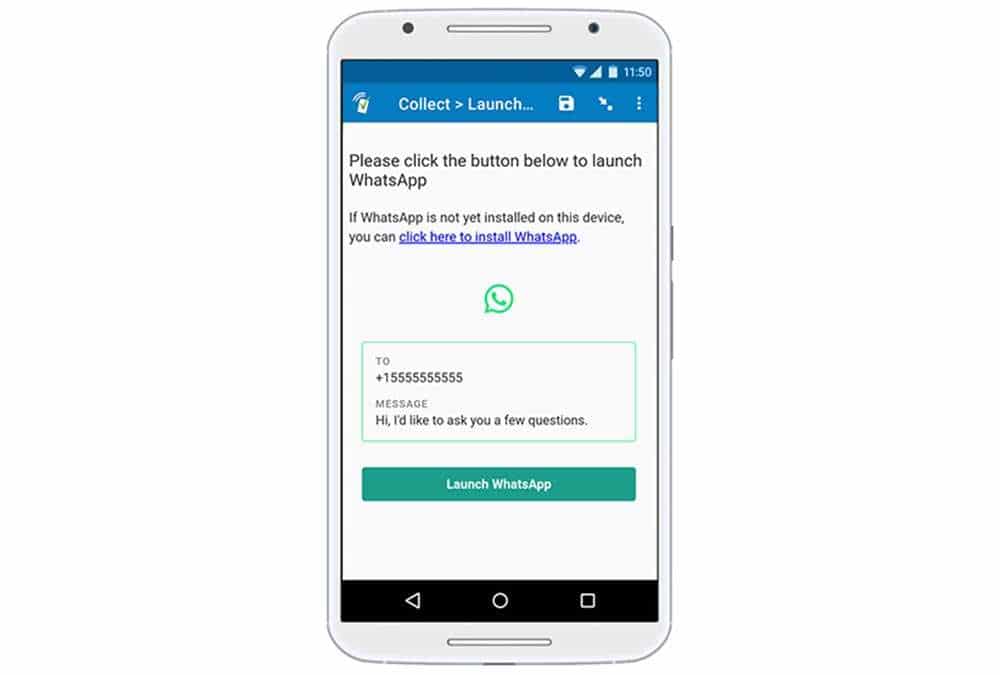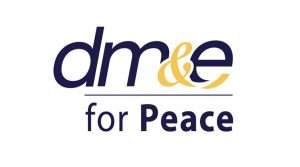- Last Updated: March 10, 2025
Deliver high quality data using WhatsApp to contact respondents or launch phone calls
WhatsApp is popular around the globe due to its ease of use and low cost. In fact, data shows that it is currently the most popular messaging app in the world.
One of WhatApp’s features is built-in polling functionality. (Maybe you’ve used this before!) This tool is great for asking simple questions to a group chat, but it’s not robust enough for sophisticated data collection; most research or monitoring and evaluation projects use complex forms and advanced survey logic.
In this blog post, we’ll walk you through how to run a simple WhatsApp poll and list some situations where they might be the most useful tool for your needs. Then we’ll discuss when a more robust survey tool, like a mobile data collection app, is more appropriate, and explain how to integrate WhatsApp and a data collection app.
How to use built-in WhatsApp polls
The built-in system for running polls through WhatsApp is simple.
- Open a chat.
- Create a poll.
- Enter your question. For example: “When are you available to attend our next enumerator training session? Select all that apply.”
- Enter poll options/possible answers. For example: “Tuesday 5pm, Wednesday 6pm, Thursday 6pm.”
- Choose whether or not you want to allow respondents to select multiple answers. Click “allow multiple answers” to turn this option on or off.
- Send your poll.

View WhatsApp’s documentation for specific instructions on how to start a poll on desktop, Android, or iOS devices.
When to use a simple WhatsApp poll: ideal use cases
The major benefit of WhatsApp polls is their simplicity: it’s simple to ask questions and get answers in a group chat. Since WhatsApp polls are so simple, and since answers are visible to the group, there are a limited number of situations where they’re the best tool for data collection:
- When you only want to ask a single survey question to a group of people. If your data collection needs are very simple and infrequent, a WhatsApp poll could be sufficient. For example, you could ask, “Which of these options is the preferred location for an enumerator training session?”
- When you want all participants to view the results of a group poll. When you share a poll in a WhatsApp group, the survey results will be visible to all participants. This is great for simple decision-making. For example, if you use a poll to agree on a meeting time, all participants will see the winning option.
When you need a survey tool more robust than WhatsApp
In most situations where you’re collecting primary data, you need a much more robust survey tool than a simple poll. Remember, WhatsApp was designed as an instant messaging app, not a software for data collection. While its polls feature is easy to use and accessible to a high volume of respondents, it does not support more complex survey design, or data visualization and monitoring.
Disadvantages of WhatsApp polls for primary data collection include:
- You can’t attribute poll votes to specific respondents, so if you wanted to follow up or ask additional questions, you wouldn’t be able to determine who voted for which option. This makes survey design components like relevance (skip logic) impossible.
- Participants can see the results of the poll, which may not be ideal — especially if you work in international development or interview people about sensitive topics.
- There is only one type of question you can ask (multiple choice), and there are no options for response field types beyond text, meaning you cannot limit responses to numerical values.
In most cases, WhatsApp polls aren’t an ideal method of data collection on their own—but there’s a workaround. Some professional-grade survey tools have WhatsApp integrations. This gives you the best of both worlds, as we’ll explain below.
Integrating WhatsApp with a professional-grade survey tool
If you need to conduct a survey to collect data, WhatsApp can be an ideal tool for reaching respondents who might otherwise be inaccessible, and it’s already been used in this way by data collection professionals for some time. Now, many researchers and M&E professionals across the globe want the ability to further digitize and streamline their data collection workflows by connecting with survey participants using WhatsApp.
If you currently use WhatsApp for calling or messaging your respondents and then use a separate data collection tool for conducting surveys, we have good news: You could be calling, messaging, and surveying respondents on the same platform!
SurveyCTO is a robust mobile data collection platform designed to help you collect data with ease from anywhere in the world – even in the most remote locations with no internet connectivity.
At one time, many SurveyCTO users were using both WhatsApp and our survey platform separately, so we created a WhatsApp plug-in that provides a seamless way to integrate the two tools in a single workflow.
The way it works is simple: With the SurveyCTO WhatsApp plugin, you can launch WhatsApp directly from a form in the SurveyCTO Collect app on your mobile device.

Using WhatsApp directly from your surveys with SurveyCTO 's field plug-in
When you want to launch WhatsApp directly from a form in SurveyCTO, you can use the WhatsApp plug-in. Typical field types in a survey tool include text, multiple choice, numbers, and a dropdown menu. Field plug-ins in SurveyCTO let you customize what’s possible to put in a field, so that your field types are pretty much limitless.
With the WhatsApp plug-in inside SurveyCTO, you can launch WhatsApp using pre-populated information from your survey form. Common ways that researchers and M&E professionals use the SurveyCTO WhatsApp plug-in include:
- Obtaining informed consent
- Sending interview reminders
- Confirming follow-up interviews
- And sending other important communication for respondents
Phone surveys get easier with SurveyCTO’s WhatsApp plug-in
Do you use computer-assisted telephone interviewing (CATI) for data collection? You can combine SurveyCTO’s wide range of phone survey-related features, including integrated call management, audio recordings for survey management, and remote management of enumerator devices with our WhatsApp plugin for an up-to-date CATI workflow. You can use WhatsApp from within SurveyCTO Collect to easily schedule calls with respondents. When it’s time for the interviews, you can deploy the phone-call field plug-in from Collect, use an attached headset, and conduct your survey all on one mobile device.
Start your free trial of SurveyCTO today
If you currently use WhatsApp for calling or messaging your respondents and a separate data collection tool, why not use them both together on the same platform? Sign up for a free trial of SurveyCTO and see how streamlined your data collection can be with our WhatsApp integration.




